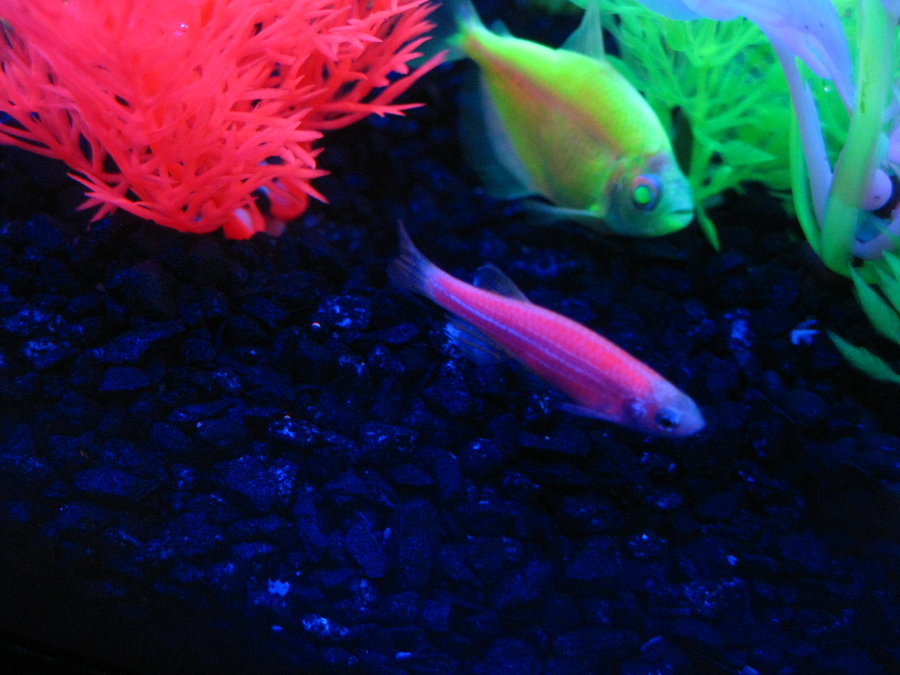Island Mice Project
What is the Future?
Science gives us tremendously important insights into how organisms and ecosystems function. But our subjective moral and ethical frameworks tell us what, if anything, we should do to change these functions. Any decision to manipulate (or not manipulate) plants, animals, or landscapes is primarily ethical in nature, rather than scientific. So, as we contemplate the potential development and release of genetically modified organisms (GMOs) for the purpose of advancing biodiversity, it is helpful for scientists and other citizens to be conscious of what values we want to guide us.
Back to top
Hypothetical Case Studies
To illustrate the complexities involved in the invasive species eradications, we think it might be helpful to consider some hypothetical future case studies. While these will not be exhaustive of all of the possible conditions, complications, and outcomes, they might help in thinking about the pros and cons of future action. In fact, they show that a simple pro and con dichotomy is inadequate to describe the complexity of this technology and its potential applications.
Island A
To begin with, let’s attempt to consider a very simple case. This island is uninhabited other than the temporary residence of scientists at a small lab. It is under the regulation of a country with rather unrestrictive environmental laws, whether they involve toxicants or genetic modification. While Island A is fairly small (1 square kilometer), it is also well removed from the mainland and any other island of similar size. Despite its isolation, this island is a cultural symbol in the country as it is a pristine habitat that is the last known breeding ground of an endangered seabird. Because of this, philanthropists and interest groups often donate to help preserve this island.
Unfortunately, a population of house mice (Mus musculus) has established on the island. They have yet to cause any known permanent harm to the island ecosystem, but they have been seen to compete with an endemic lizard species and also prey on the eggs of the endangered seabird. When the public became aware of this biological threat, they agree that something needed to be done and are willing to consider any solution that will return the island to its pristine, symbolic status.
What can be done in this situation? As long as the mice are ultimately removed from the island, this situation should end positively for everyone and would be ideal for the ecologist or environmental manager. Ultimately, what needs be considered is what eradication strategy is most efficient in removing the mice, and what is best for the native species on the island. However, even in this case where nearly everything is ideal for eradication, we can’t be certain about which strategy is the best. Genetic modification might have fewer direct impacts on the rest of the ecosystem, but might be slower acting and be less likely to succeed in eradication. It could also have unseen, indirect dynamical changes on other species. It also lacks precedent, making it very difficult to predict possible outcomes outside of the purely theoretical sense.
Island B
For another example, we’ll consider a more complicated case. This island contains two small cities (around 10,000 people each), one of which is a tourist destination and another of which is mostly composed of permanent residents. There, various regulatory complexities make it difficult to conduct any
large-scale environmental projects in fewer than 10 years. Additionally, this island is only 10 kilometers from the mainland and is around 250 square kilometers in size. Like the previous island, this is also the last known breeding ground of an endangered seabird. While the citizens of the island are concerned with the fate of this bird, they have more urgent issues within their own lives. Beyond this, others consider the mouse to be part of the ecosystem itself, despite its non-native origins. Thus, a majority of the concern for this species comes from those who live far away from this island, many of which haven’t even set foot on it.
As before, house mice wreak their havoc on the local ecosystem, causing this native seabird to dwindle in population. Outside environmental groups have proposed every potential strategy they have to eradicate these mice, but public reaction is rather mixed. Though most citizens agree that removing these mice is important, a majority also strongly oppose the use of rodenticides and do not feel comfortable with the idea of genetically modified mice living in their backyards.
Unfortunately, this leads to extreme and unresolvable conflicts of ethics, politics, and ecology. This example might be an extreme one, but so was Island A. The conditions on actual islands will probably fall within a spectrum between these two, but will also include many other important factors that aren’t even discussed here. In cases like this, the path of least resistance might likely be the lack of any action whatsoever. However, just as there are consequences to action, there are consequences to inaction. Despite the considerable amount of complexity involved, we believe that there are a number of concrete actions worth considering. Though it will vary largely between each situation and may ultimately fail, the common factors that will help are transparency, outreach, and participation.
What Could Happen? What Should Happen? Will Citizens Have A Say?
Public engagement in the policymaking process is a difficult ideal to realize no matter what the topic: aside from Election Day, the US offers few formal opportunities for citizens to deliberate about the national agenda. In the realm of science, this difficulty stems in part from a power imbalance that accompanies the unequal distribution of technical expertise.
As David Guston notes1, even policymakers often lack the expertise to decide whether one scientist’s findings are more reliable than another’s – and once they find a scientist they trust, they have few ways of knowing whether that scientist is providing them with the fullest extent of information.
Ordinary citizens are faced with a more drastic variation of this dilemma. Like policymakers, they depend upon technical experts for advice, but unlike policymakers, they have little leverage over these experts. Another problem stems from the fact that experts tend to think about problems in terms of statistical probabilities, and to frame solutions in purely technical terms and statistics that can be manipulated to bolster different political agendas. By contrast, the broader population is more likely to rely on values and personal experience to guide them in decision-making.
This website represents our attempt to present you with the best information we currently have about technical issues and statistical probabilities. At the same time, we also think it’s important to note that relying on values is a perfectly valid way of making decisions. Despite their use of technical terminology, experts rely on their values to make decisions, too. After all, to limit a conversation to technical issues is to make a value-laden political choice. Whether they intend to do so or not, scientists who limit deliberative conversations to purely technical terms also limit the degree to which their fellow citizens can participate in the conversation.
Our goal is to make it more possible for interested citizens to decide for themselves what to think aboutpotential intersections of biotechnologies and environmental conservation. To do so, we’re attempting to serve as what Roger Pielke calls “honest brokers” – experts who expand the scope of options that are available to their fellow citizens, rather than narrowing the political agenda to highlight their own preferred alternatives.2

Roger A. Pielke Jr. Author of The Honest Broker: Making Sense of Science in Policy and Politics Photo: Courtesy of Wikipedia.
Pielke suggests that when evaluating scientific knowledge in policy debates, citizens should ask the following questions:
- If your policy recommendation is indeed based on scientific results, what scientific information would be necessary to change your policy position? (If the answer is “no information” then why depend on science at all?)
- A range of policies is consistent with particular scientific results. What is the full range of options that you see as consistent with the state of science in order to achieve particular desired ends? Within such a range, what factors other than science do you use to settle on one policy, or group of policy options, over others?
- [See Kindle Locations 1490-1495]
In the context of debates about how genetic engineering might be applied for environmental purposes, we suggest that citizens also ask the following additional questions:
- How do we think decisions about eradication campaigns and genetic engineering should be made? Who should make such decisions? [See Patents and Legalities pages]
- What values do we want to guide our decisions? [See “Why Does Biodiversity Matter,” “Human-Mouse Relationship,” “Public Opinion,” “How Will We Decide?”]
- What types of risks are we willing to take on? [ See “Ecology of Eradications“]
- What consequences might accompany taking different courses of action, versus taking no action at all? [See “Future Hypothetical Case Studies” and “No Methods Applied”]
References
- Guston, D. H. (2003). Principal-agent theory and the structure of science policy, revisited: “science in policy” and the US Report on Carcinogens. Science & Public Policy (SPP), 30(5), 347–357.
- Pielke, R. A. (2008). The honest broker: making sense of science in policy and politics. Cambridge: Cambridge University Press.
How Will Public Opinions Affect This?
Uses of Genetic Engineering
Opinions about genetic engineering range from disgust to awe. These opinions may also depend on what type of animal is being genetically manipulated, how such manipulation is being done, and for what reasons. In California, pet fish that have been genetically altered to fluoresce (GloFish) have been restricted for sale.1 In California, Commissioner of California’s Fish and Game, Sam Schuchat, felt that there was a difference in genetic modification depending on the use of the product made. Yet, for the rest of the United States these fish are found in several species, varieties and morphs.2 For some the use of genetic engineering for pets can be viewed as frivolous and/or an abuse of power. On the other hand, use of genetic engineering may be largely unknown. For example, medications such as human insulin, have long been made through genetic modification of bacteria and yeast. (See Patents)
Genetic engineering in food and agriculture
For many people genetic engineering brings about the debate about using the technology for food and agriculture. People who support genetic engineering for food and agriculture sometimes argue that it can reduce farm-workers exposures to pesticides and for increasing agricultural yields. People may also want to implement genetic engineering for increased nutrition by adding vitamins by creating agriculture, such as golden rice. While, opponents are focused instead on examining if there are any long-term risks, toxicity, and or allergens associated with genetically engineered organisms. There is also concern over the regulation of GM products (See Patents) and the need for risk-benefit analyses to be conducted.
What do we mean by the words “public” “stakeholders” “experts” and “citizens”?
The word public means different things to different people, and in various contexts. Scholars sometimes refer to the interactions between scientists and the public, but this suggests a neat division that rarely reflects the complex interactions among different groups of citizens. For this website we have used a definition similar to the one used by the National Academies in regards to public participation in environmental assessments. The public in this regard includes people “who are a part of an institutionalized decision making process.” 3 This public can also include stakeholders, which are people in support of an organized interest.3 And, within this public there are citizens and expert practitioners. Expert practitioners are professionals and specialists considered competent in their fields of study.4 What complicates this matter is that experts are also citizens, and citizens do not form a single public group.
Who participates?

Nora Haenn Associate Professor of Sociology & Anthropology/Interdisciplinary Studies at NCSU. Photo By: The GES Center at NCSU
Like “public,” the term “participation” is used in different and sometimes contradictory ways. Dr. Andrea Cornwall in “Unpacking ‘Participation’: models, meanings, and practices” acknowledges the word participation is nebulous and instead clarifies meaning by describing different forms of participation.5 For the case of eradication campaigns we feel that interactive participation methods work best. These methods enable people from various groups to participate in the formation and implementation of action plans.
Here participation includes multiple perspectives from all aforementioned groups; publics, citizens, stakeholders, and experts. Because ideals about what public participation can and should mean vary widely, “it is vital to pay closer attention to who is participating, in what, and for whose benefit” (Cornwall, 2008, p. 269). As McCoy and Haenn (2013) note, “One group’s pursuit of justice through the court system may prove to be another’s truncation of the possibility of justice. One group’s protest movement may be another’s intimidation campaign.” 6
Scientists and other stakeholders
Some of you reading this website may be scientists or other expert practitioners struggling with how to interact with a policymaking process. We can’t tell you what to do, but some of our academic reading offers a framework for considering your options. This approach is based on Roger Pielke. Jr in the Honest Broker, and states, scientists and stakeholders should approach certain scientific dilemmas from a standpoint of an ‘honest broker perspective’.7 An honest broker is one who informs the public about the scope of choices involved in the procedure.7 The honest broker method is best accomplished by offering policymakers and the public a range of multidisciplinary expertise, views, experiences and opinions and laying out a broad spectrum of potential policy options for them to choose from. Other forms of expert participation in policymaking can be vulnerable to ‘stealth issue advocacy’.6 A stealth issue advocate is a technical expert who tries to persuade and convince participants that a certain method is best employed through a certain strategy. A stealth issue advocate may attempt to compel a decision or outcome by suggesting that those who disagree with him or her simply have a lack of knowledge or that the decision is one of science and not of values (See: What could happen? What should happen? Will citizens have a say?). To avoid stealth issue advocacy it is best to facilitate interactive participation by means of open dialogue.5
References
- Agriculture.http://californiaagriculture.ucanr.edu/landingpage.cfm?article=ca.v060n03p126&fulltext=yes
- Anthes, Emily (2013-03-12). Frankenstein’s Cat: Cuddling Up to Biotech’s Brave New Beasts (pp. 27-28). Farrar, Straus and Giroux. Kindle Edition.
- Dietz, T. Stern, P. 2008. Panel on Public Participation in Environmental Assessment and Decision Making. National Research Council http://www.nap.edu/catalog/12434.html
- Fisher, E. 2011 Public Science and Technology Scholars: Engaging Whom? Science Engineering Ethics 17: 607-620
- Cornwall, A. 2008. Unpacking ‘Participation’; models, meanings and practices. Community Development 43(3) 269-283
- Mc.Coy, R. Haen, N. 2013. “Gentleman-Type Rules’ and ‘Back Room Deals’ in Public Participation: Natural Resource Management and a Fractured State in North Carolina” Journal of Political Ecology 21: 444-460.
- Pielke, R. 2007. The Honest Broker, Making sense of science in policy and politics. Cambridge University Press, U.K.
How Will We Decide?
Science gives us tremendously important insights into how organisms and ecosystems function. But our subjective moral and ethical frameworks tell us what, if anything, we should do to change these functions. Any decision to manipulate (or not manipulate) plants,
animals, or landscapes is primarily ethical in nature, rather than scientific. So, as we contemplate the potential development and release of genetically modified organisms (GMOs) for the purpose of advancing biodiversity, it is helpful for scientists and other citizens to be conscious of what values we want to guide us.
The number of ethical frameworks that we can apply in our decisions is practically infinite. Each of these frameworks emphasizes some aspects of a situation while minimizing or ignoring others. For example, think about the way that issues are framed in news stories. Robert Entman, a social scientist who studies news media, puts it this way:
Frames . . . define problems—determine what a causal agent is doing with what costs and benefits, usually measured in terms of common cultural values; diagnose causes—identify the forces creating the problem; make moral judgments—evaluate causal agents and their effects; and suggest remedies—offer and justify treatments for the problems and predict their likely effects.1
The ethical framework of environmental conservation often defines problems, diagnoses causes, makes moral judgments, and suggests remedies by prioritizing prompt human action to avoid damage to the environment. We think these goals are important, ethical, and desirable. Nevertheless, a framework that prioritizes fast-moving action, even in the absence of complete information, may not be the best one to apply when evaluating potential applications of genetically engineered organisms, which may deserve to be evaluated thoughtfully rather than speedily.
Future innovations in genetic engineering
This website focuses on the potential of reducing or eradicating unwanted populations of invasive mice through genetic modifications that alter the sex ratio of their offspring [See SRY]. But this may be only the tip of the iceberg when it comes to the potential intersections of genetics and conservation. For example, George Church, head of Genetics at Harvard Medical School, predicts that a technique he is developing will present the opportunity “to resurrect practically any extinct animal whose genome is known or can be reconstructed from fossil remains, up to and including the woolly mammoth, the passenger pigeon, and even Neanderthal man”.2
This is a broad promise, and it’s impossible to know for sure whether Church’s prediction will prove true. In the spirit of Pielke’s call for “honest brokers” to expand the scope of deliberative conversations, we think it would be reasonable for citizens to expand their deliberations to include questions beyond the scope of this site. For instance, would invasive pests seem so threatening anymore, if the species they endanger could be made more resilient, or even resurrected after becoming extinct?
References
- Entman, R. (1993). Framing toward clarification of a fractured paradigm. Journal of Communication 43,3 pg 52 (Emphasis in Original)
- Church, G., & Regis, E. (2012). Regenesis : how synthetic biology will reinvent nature and ourselves. New York: Basic Books. p. 10.





